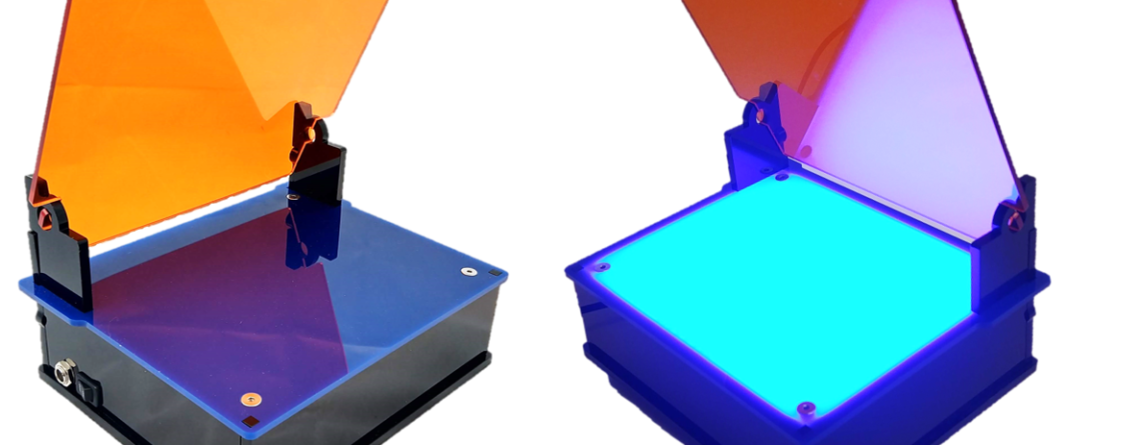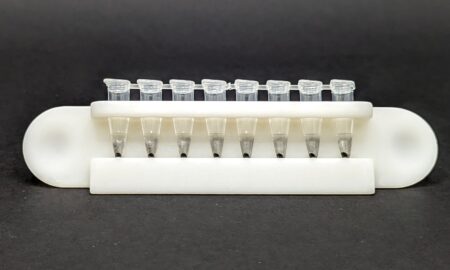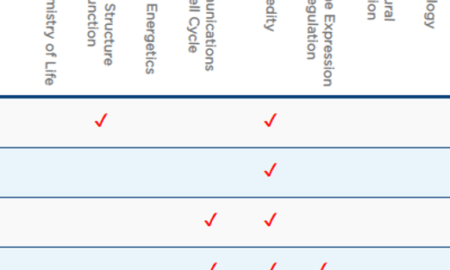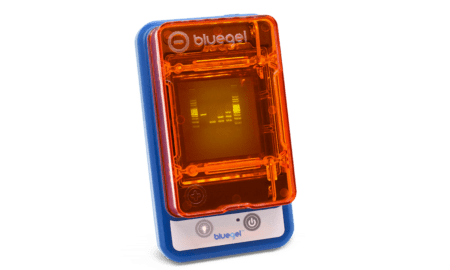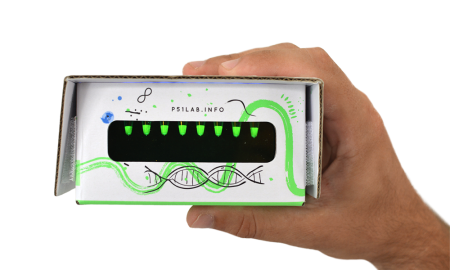Safe nucleic acid detection with blue light transilluminators
What is a DNA transilluminator?
Transilluminators are used in molecular biology laboratories to view DNA or RNA that has been separated by agarose gel electrophoresis. Exposing the stained gel to a light source makes the DNA fluoresce and become visible. If you’re considering getting a new transilluminator to visualize DNA or RNA, you’re facing a choice of UV-based or LED-based blue light transilluminators.
Advantages of blue light over UV transilluminators
Unlike UV transilluminators, which often use fluorescent UV bulbs with shorter lifespans, LED transilluminators offer a longer-lasting and safer option that’s increasingly becoming the choice in molecular biology labs. Here are some of the advantages of blue light transilluminators:
- Blue spectrum visible light that avoids risks associated with UV radiation.
- Sensitive DNA and RNA detection with a variety of nucleic acid stains that are not considered hazardous for people or the environment.
- Lower DNA damage rate than UV transilluminators, which enhances cloning efficiency and results in more successful experiments.
- As a bonus, blue light transilluminators can also be used to detect proteins and other fluorescent molecules.
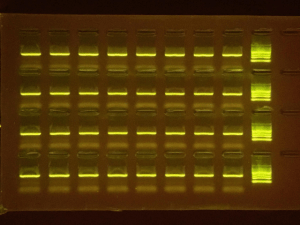
Which blue light transilluminator is right for me?
Here are some key variables to consider when selecting a blue light transilluminator:
- Wavelength: The blue light spectrum emitted by the transilluminator should typically peak around 470 nm. This wavelength is optimal for exciting common fluorescent dyes used to detect DNA and RNA. Make sure the transilluminator you choose is compatible with your nucleic acid stain.
- Size and Viewing Area: Consider the physical dimensions of the transilluminator, especially the size of the viewing area. Choose a size that accommodates the gel sizes you typically work with and provides enough space for multiple gels if needed. Because they are much safer than UV counterparts, blue light transilluminators can be right on your benchtop, so oftentimes, the more compact the better. If you require mobility, look for a transilluminator with a compact design that allows for easy transport or storage.
- Ease of gel documentation: Some transilluminators come with additional features like pop-up imaging hoods compatible with your cell phone. Foldable hoods can simplify data capture and analysis, eliminating the need for a darkroom or gel documentation system.
- Durability and build quality: Evaluate the build quality and durability of the transilluminator. It should be sturdy and well-constructed to withstand frequent use in the lab environment.
Blue light transilluminators by miniPCR bio™
blueBox™ transilluminators include two options for accurate and safe gel visualization so you can choose the one that best suits your needs. Main features include:
- Safe visualization of nucleic acids with high sensitivity.
- Compatible with all major safe green nucleic acid stains including SeeGreen™, GelGreen® and SYBR dyes.
-

Foldable hoods can simplify data capture and analysis, eliminating the need for a darkroom or gel documentation system. Support downstream applications such as cloning, sequencing, and library preparation.
miniPCR bio offers two transilluminator models to choose from:
- blueBox™ S is a compact transilluminator for small bench spaces.
- blueBox™ Pro features a larger viewing area and a taller lid optimized for gel excision.
How does blueBox™ S transilluminator stack up to blueBox™ Pro?
| blueBox™ S | blueBox™ Pro | |
| Dimensions and weight | 6.5” x 4.25” x 3.25”, 14 oz. | 6.5” x 5.25” x 4”, 16 oz. |
| Viewing area | 100 x 90 mm | 140 x 114 mm |
| Illumination | 96 high-intensity LEDs | 139 high-intensity LEDs |
| Excitation spectrum peak | 470 nm | 470 nm |
| DNA stain compatibility | GelGreen®, SeeGreen™, SYBR, among others | GelGreen®, SeeGreen™, SYBR, among others |
| Imaging hood | Included Fold-a-View™ | Included Fold-a-View™ |
| Integrated hinged lid | Compatible with gel excision | Tall and optimized for gel excision |
| Compatible with downstream applications, like cloning | Yes | Yes |
| Power supply | AC 100-240V, 12V DC output. Battery compatible. | AC 100-240V, 12V DC output. Battery compatible. |
| Warranty | 2 years | 2 years |
Summary: blue LED advantages over traditional UV transilluminators
Because they use pure visible blue light as the excitation source, blue LED transilluminators eliminate the need for dangerous ultraviolet radiation. They can effectively excite safe and sensitive nucleic acid stains as UV spectrum light, but without the UV associated hazards. What’s more, blue light transilluminators allow you to eliminate ethidium bromide from your molecular biology workflows. And they are compatible with downstream applications such as molecular cloning.
Related resources:
